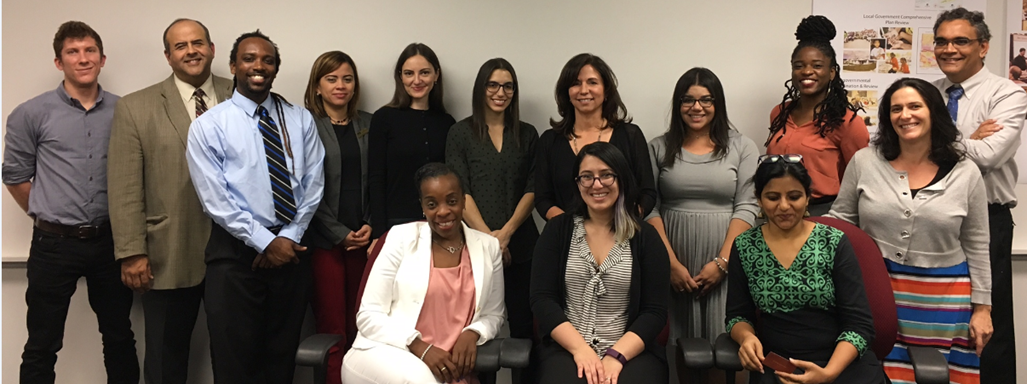During the Fall 2016 semester, FIU students collaborated with the South Florida Regional Planning Council to produce a multifaceted assessment of Liberty City’s economic development.

FIU’s Liberty City Economic Development and Urban Revitalization Project Presentations were held on Tuesday, November 29th at 6:30-8:30pm, at the Council office in Hollywood. The Council was pleased to partner with Florida International University’s Department of Public Administration to help guide class research projects for a graduate course on economic development. The students’ class projects, found below, are focused on Education; Business & Economy; Transportation & Amenities; Health & Quality of Life; Civic Engagement; and Housing & Land Use in Liberty City.
The students presented unique recommendations for community and economic revitalization based upon current data and academic research. The students used a range of tools to analyze and interpret relevant community indicators and conducted interviews with the community representatives. One of these tools is the Southeast Florida DataCommon.
Key Findings
Economic Opportunity
-
-
- Mostly small businesses involved in services and retail
- Majority employment in the education, food service, and retail industries
- Opportunity: financial infrastructure improvement, including banks and small business microloans
- Opportunity: Location: 1-95, MIA International, Port Miami all nearby
- Opportunity: 30+ commercial spaces for sale, more for lease, cheaper rates relative to surrounding areas
-
Housing Opportunity
-
-
- Aging housing stock – majority was built before 1960
- Nearly 20% of the housing stock is vacant
- 68% of occupied housing is rented, 32% owner-occupied
- High housing cost burden in the area
- Opportunity: provide incentives to landlords to maintain and upgrade old housing
- Opportunity: rehabilitate public housing
- Opportunity: increase job prospects to encourage redevelopment and reduction in vacant space
-
Education Opportunity
- 25% of the population is between 5-19 years old
- Only 28% continue their education past high school; 28% also hold less than a high school diploma
- Graduation rates steadily on the rise, however preparedness indicators (such as the SAT) are on the decline
- Opportunity: increased SAT preparation measures and alternative education paths
- Opportunity: continue investments into adult education programs and job training
- Opportunity: actively remain in contact with students that drop out and those that graduate to facilitate further training, alternative education, and job placement

